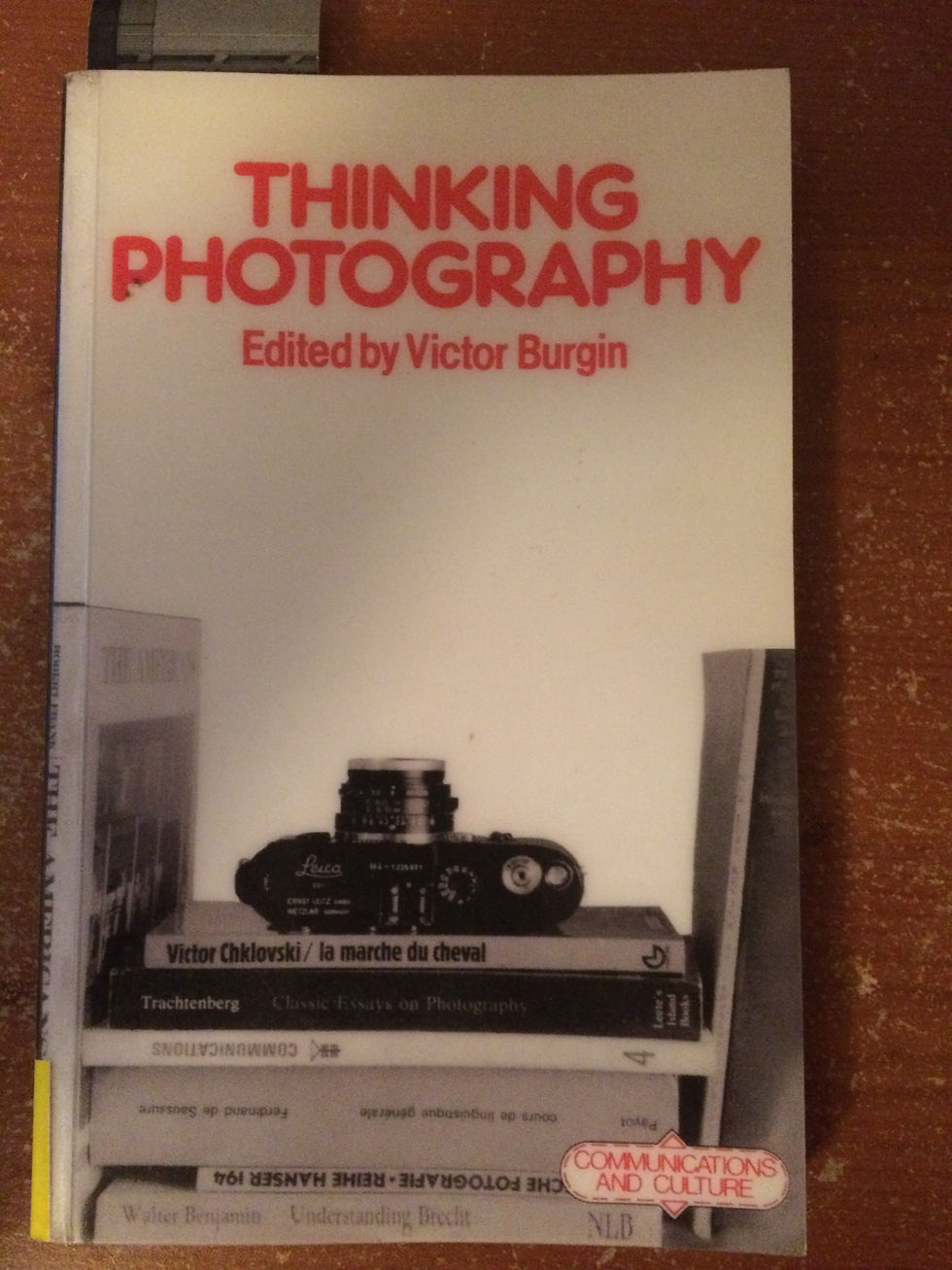Thinking Photography Part 2
- Dave Macey

- Oct 12, 2015
- 2 min read

With this chapter I didn’t feel that he was particularly breaking new ground.
He starts by talking about the use value of objects and of how a language evolved to describe these objects, with the example of a stone axe head being different to a normal stone, thus needing a different description. From this point he then discusses, what he calls the “use value”. This is the value we place on an object in relation to how much benefit we receive from the item.
Burgin then gives the spoken language a use value because it enables us to communicate clearly with each other and then goes on to call language an artefact by stating:
Language is an artefact among other artefacts, an instruments among other instruments by which man organises his environment. It is a tool used to program a certain class of operations in the environment. (P45)
So by using a language we can organise our environment and extend some influence and control on the world around us. We do this by labelling the objects in our environment and once the are labelled, they have been identified and can then be manipulated.
Burgin then starts to build a case for the visual language. This is done by using site to recognise an object and then we identify it and then attribute a “use value” to this object. Consequently everything we see has a value to us, whether it be personal or social or cultural. Burgin then goes on to claim:
All that constitutes reality for us is, then, impregnated with meanings. These meanings are the contingent products of history and in sum, reflect our ideology. We may acknowledge this is an act of theoretical reflection, but not at the moment of perception. (P47)
From this point he then talks about Barthes and the meaning we attribute to something can be classed as a myth. This is because there is a process of implication rather than something explicit. To use a rather old but famous example, David Hume talked about seeing a loaf of bread but could easily be something that looks like a loaf of bread. This is because when we see something that looks like something then we attribute meaning to the object.
Consequently we can be mistaken as this is an implied meaning and does not become explicit until that implication is confirmed, usually by another sense, and so it becomes a “myth” until it is confirmed. Burgin concludes this neatly by saying:
It is a constant game of hide and seek between the meaning and the form which defines myth. (P48)
So, even though I don’t feel that Burgin has said anything particularly insightful in this chapter he is building a solid case for the visual language and its implications. The other useful point of this is that it is a good example of building an idea with using the evidence of others, all the points he makes have academic sources and provides a sound footing for the theory.



Comments